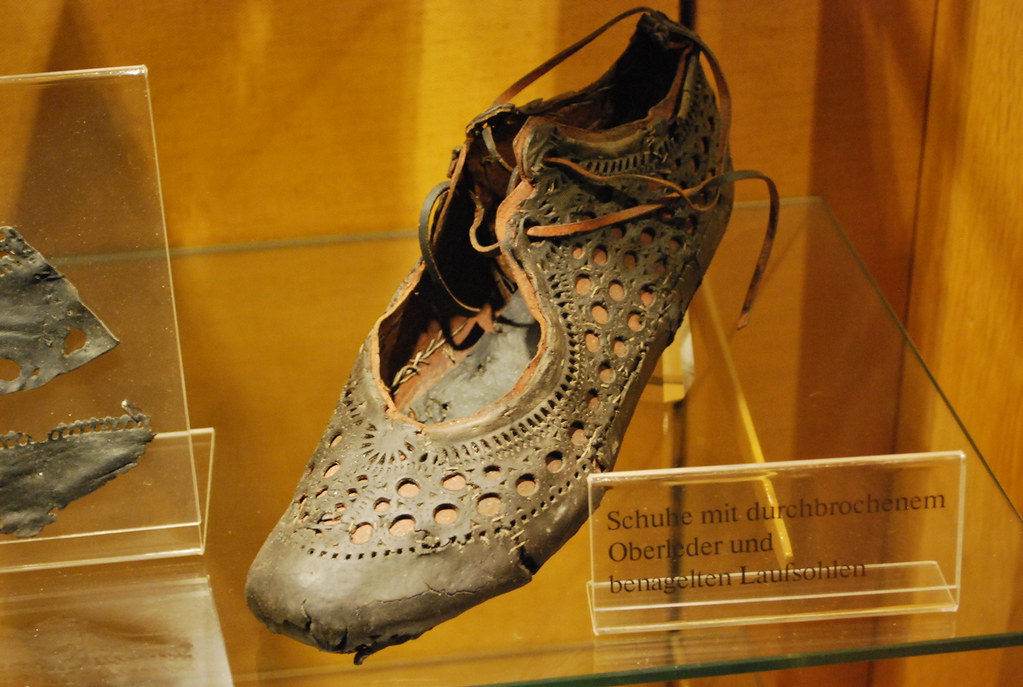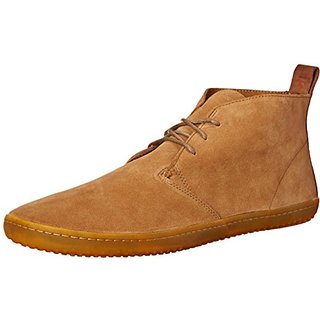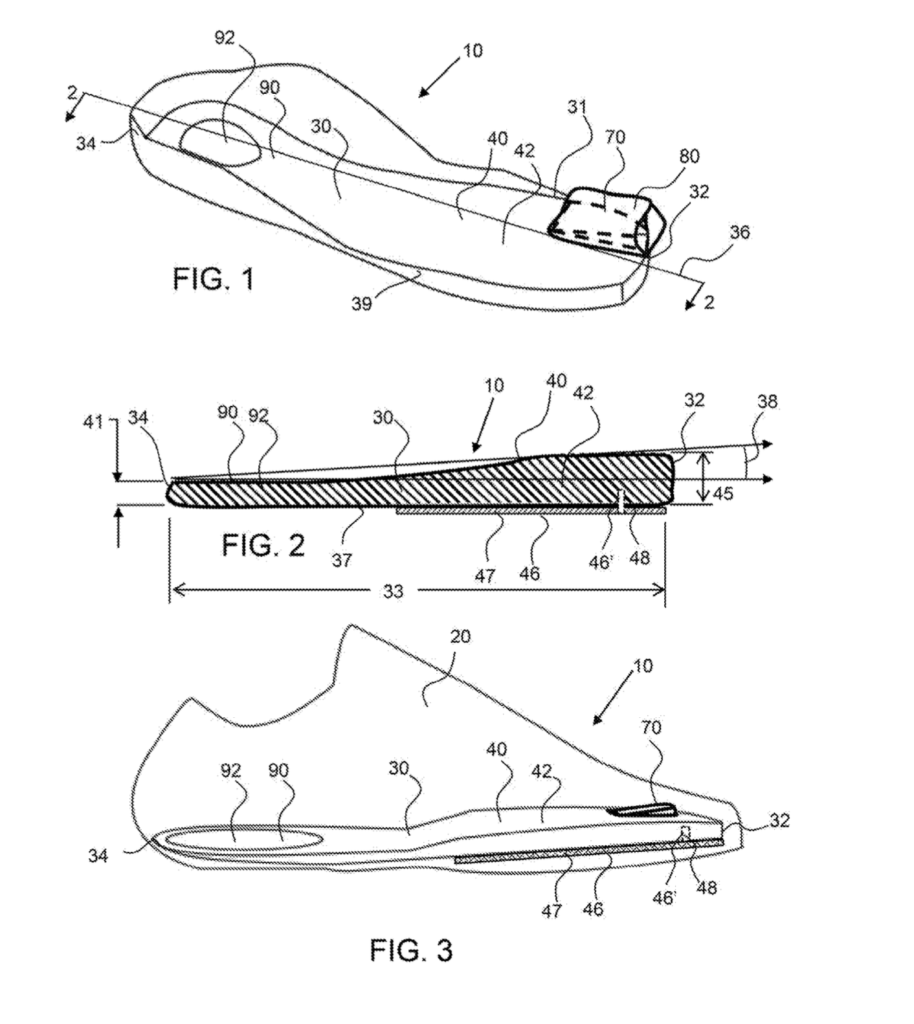ORTHOTIC FOOTWEAR
The orthotic footwear industry, encompassing products like orthopedic shoes and foot orthotic insoles, represents a significant market with considerable growth projections:
- Orthopedic Footwear Market: As of 2022, the orthopedic footwear market was valued at over USD 3.6 billion. It is projected to surpass USD 12.0 billion by 2035, growing at a compound annual growth rate (CAGR) of around 10% between 2023 and 2035.
- Orthopedic Shoes Market: The global market for orthopedic shoes was estimated at USD 5.3 billion in 2021. This market is expected to reach around USD 7.2 billion by 2028, growing at a CAGR of 4.5% during the forecast period from 2021 to 2028. Furthermore, another source estimated the orthopedic shoes market at USD 3627.0 million in 2022, with projections to reach USD 9070.9 million by 2032, growing at a CAGR of 9.6% from 2022 to 2032.
- Foot Orthotic Insoles Market: The global market for foot orthotic insoles was valued at approximately USD 3.36 billion in 2022. It is anticipated to grow at a CAGR of 7.0% from 2023 to 2030, with predictions to expand to around USD 6162.58 million by 2030.
These figures indicate a robust and expanding market for orthotic footwear products, driven by factors like an aging population, increasing incidence of diabetes, and conditions like plantar fasciitis.
STATE OF PLAY
50 years ago none of this existed. 100 years ago the sole of footwear was a simple piece of leather and shoes were primarily used for protection from the surroundings (cold and dirt). It is hard to find a better example of the tendency of our built surroundings to drive us toward compounding musculoskeletal pathologies. If orthotics were intrinsically advantageous the 4/5ths of the world population that still use primitive footwear primarily for protection would be riddled with foot pathologies, but the opposite is true. This issue has emerged in industrialized surroundings perhaps as recently as post WWII.
The recent movement to Paleo Footwear responds to this compounding diversion from musculoskeletal resilience. However, if the innate functions of the feet have not fully developed due to a history of supportive footwear use the learning curve can be quite challenging, with significant potential for irritation/inflammation.
Outsole:
What is needed is a mechanism that can reactivate the innate potentials within the foot and its connections throughout our structure. The “Outsole“, discussed below, is an example, providing an inverse function to a standard insole.
OUTSOLE
Putting a lift under the ball of the foot drives the body mass forward in the gait cycle. This engages most of our neuromotor faculties like dancing or shock-absorptive running does. Adding Outsoles to Flip-Flops is a great place to start this retraining process as you can wear them for just a few minutes at a time to get things moving and changing. Once you are acclimated, a process that for many of us will take at least several months, you can remove the insoles from your shoes and insert these instead. You may/may not need to go up a shoe size.
It is common for people who try these to say that they initially thought it would tip them backward, but find instead that their bodyweight shifts forward. Additionally, they continue to move with their weight better centered over the balls of the feet even when they are not using them.
Innate reflex circuits may become activated and continue to remain engaged once restimulated.
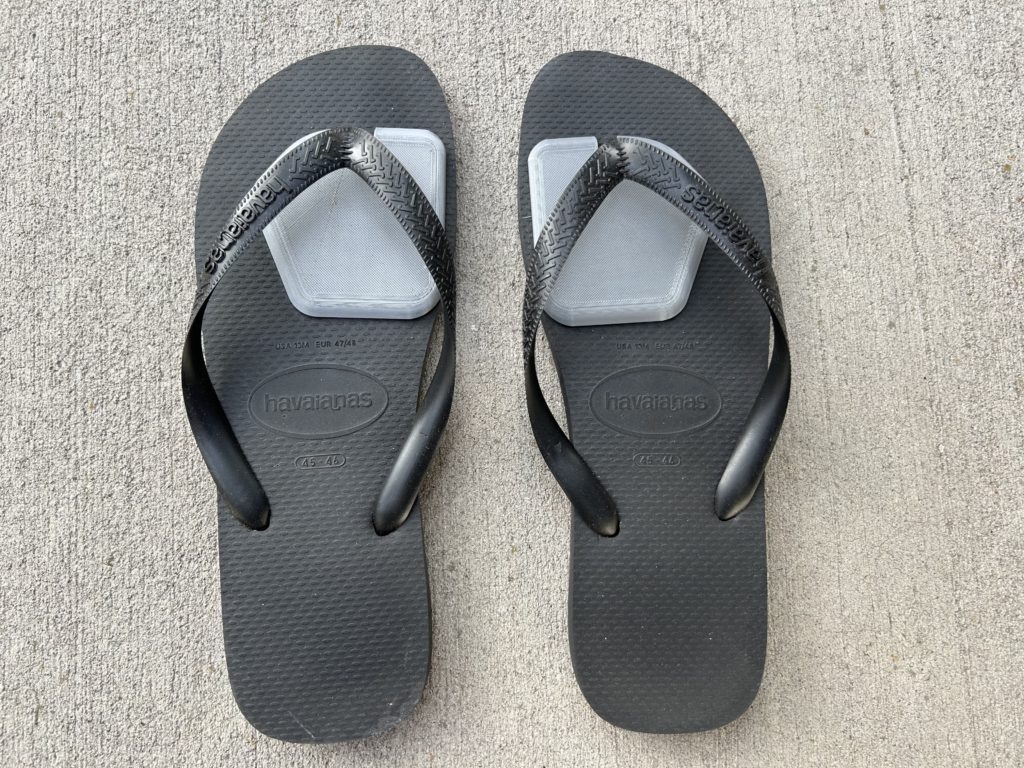
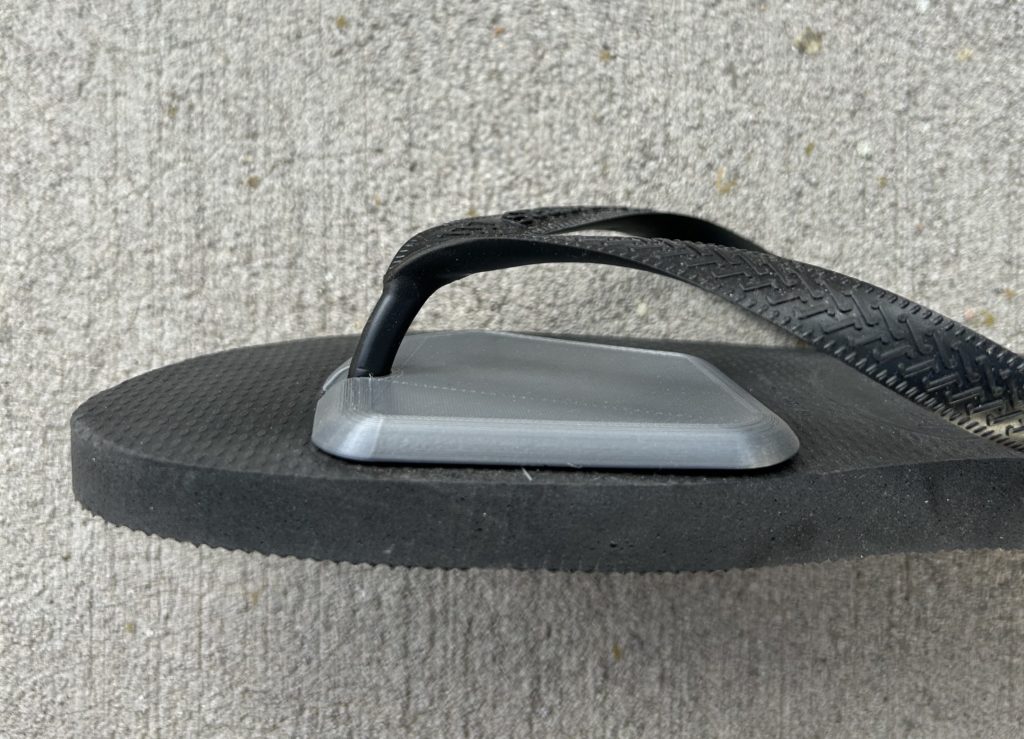
NB: If you try this without guidance, which is what I did, please be careful, conservative, and responsible. If you do not trust that you understand your body well enough, find a Manual or Movement Therapist to assist you.
There is A LOT that changes in the body once you go down this road, not only physically, but neurologically as well. Using these is a form of exercise – dominantly for the lower leg and feet, but also the whole body.
Additionally, it is an exercise for neurological reflex arcs as much as for the muscles(fascia).
You grow into these as you grow into any new skill. It is the activity of increasing your Adaptive Capacity.
If you put these in closed instead of open-toe shoes you may need to go up a shoe size. Forefoot gait increases the length of the arc of the sole as you engage the ball, causing the heel to bind on the back of the shoe. The difference is ~ 7% increase in length along the sole. More vertical clearance in the toe box may also be needed.
This is a significant limitation of current shoe design norms, restricting the body’s ability to employ forefoot gait – shoe design encourages the foot to land flat on the ground or contact the heel first.
STLs of the Outsoles for 3D Printing:
These can be ordered from any of the many 3-D PRINTING COMPANIES
http://www.brianesty.com/stl/Left.stl
http://www.brianesty.com/stl/Right.stl
Material: TPU
Infill Density: 30%
Scale: 100% = 265mm. (Size 13M, US), or
Scale to Height: 100% = 74″
Scale to your foot based on one of these numbers.
by providing the STL’s in the links above. When ordering,
remember to scale to your foot size, specify TPU and infill of 30%.
ANOTHER EXAMPLE
This is a post describing the structural frameworks of feet that the Outsole design encapsulates:
Feet: A Structural Description of Function
In the context of this post, the Outsole stimulates Forefoot/Ball gait.
Here is an example of other research on this concept – it has the look of a pseudo-patent, designed for concept capture rather than serious utility:
Shoe Insert for Inducting Positive Forefoot Striking
The summary (page 6) is an adequate overview of the subject matter discussed in this post.

